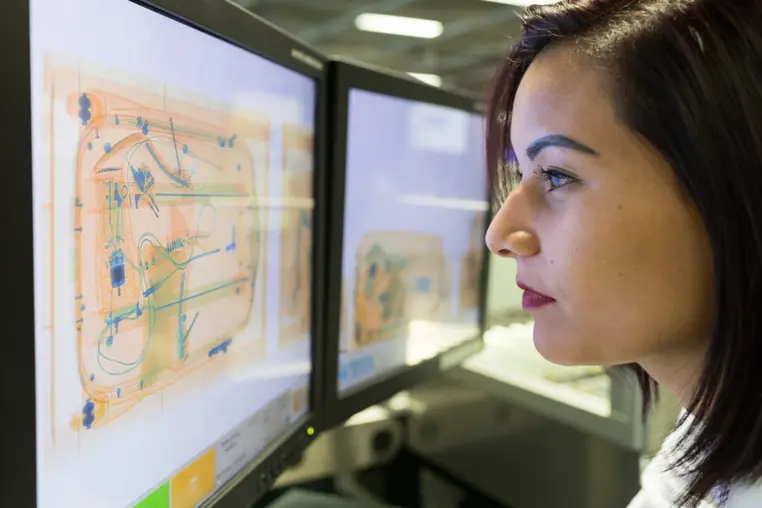Maintaining a steady flow of bags and people through the security checkpoint will be crucial for avoiding passenger build-up and minimising contact. Operating with a low screening system false alarm rate (FAR) while being compliant with detection requirements is just one of the ways that this can be achieved.
Minimising contact
In just a few short months, COVID 19 had a staggering impact on the aviation industry. Once flight restrictions are eased, minimising the level of contact between people, surfaces and baggage while maintaining screening standards will be a huge challenge. Creating a safe environment will be essential in rebuilding customer and staff confidence as people return to travel.
Managing queues, identifying potential bottlenecks and preventing passenger build-up will be key to creating a low touch environment. But how can you achieve it in such a busy area as the security checkpoint?
Cumulative effect
Passenger checkpoint screening is a complex process of many parts, all of which must be correctly balanced to deliver the best possible flow of bags and people – a steady stream makes it easier to avoid any bunching and unnecessary contact. Take for example, the automatic explosive detection screening system FAR, how it varies and the cumulative effect.
Alarms are generated automatically by the screening system and can cause a delay as the images and/or luggage are further inspected. Once an alarm has been raised, resolution varies depending on local regulations and CONOPS. Some protocols allow alarms to be resolved by re-inspecting the suspect images on-screen without opening the bag; others, however, mandate every bag generating an alarm must be opened and physically examined – requiring extensive direct contact between security officers, the bag and all its contents.
A high FAR can have a significant bearing on the flow through the checkpoint and add to the already difficult process of keeping people apart. So ensuring the FAR stays as low as possible reduces queues, personal interaction and contact.
Keep views high and FAR low
The FAR varies between screening systems but as a general rule, it is related to the number of image views generated – more views means more information. The data richness of volumetric CT technology is superior to that produced by dual or multi-view X-ray systems, enabling the system to make better decisions about baggage contents and in particular deliver a much lower FAR than conventional X-ray equipment.
CT based systems reconstruct data from hundreds of different views into volumetric 3D images and, as a result, the best can deliver a FAR as low as 5% – but that will vary between manufacturers.
Some manufacturers invest heavily in continually optimising algorithms to further reduce the FAR – with the consequent benefits of fewer rechecks
The sophistication of the screening technology also impacts rejects initiated by operators. 3D images, high image quality and enhancement functions such as virtually removing laptops, will enable them to make fast and accurate decisions resulting in fewer rejects and thus further reducing physical inspection of bags.
Small changes have a big impact
Even though the FAR is one very small element in a highly advanced and sophisticated system, it is fundamental to reducing the level of contact required for rechecking bags as well as increasing the throughput which can positively impact personal space by improving operational efficiency – a critical requirement as the industry strives to re-establish itself.

